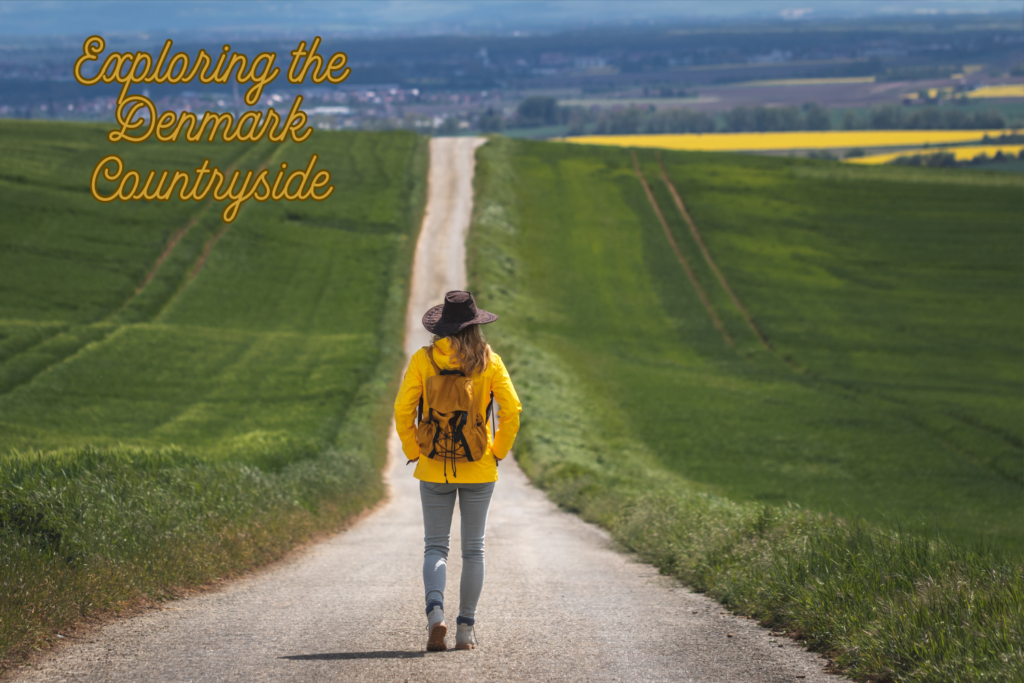Introduction
Denmark, a country known for its modern cities and rich cultural history, also boasts some of the most beautiful and serene countrysides in Europe. Stepping out of the bustling urban areas and into the tranquil Danish countryside offers travelers a chance to experience a different pace of life, where nature and tradition are deeply intertwined. This blog post will take you on a journey through Denmark’s picturesque rural landscapes, charming villages, and rich cultural heritage, highlighting why this destination should be on your travel list.
The Natural Beauty of Denmark’s Countryside
Rolling Hills and Farmlands
The Danish countryside is characterized by its rolling hills and expansive farmlands. These areas are dotted with traditional Danish farmhouses, often painted in bright colors and surrounded by well-kept gardens. Driving through the countryside, you’ll encounter endless fields of golden wheat, green pastures, and clusters of trees, creating a patchwork of natural beauty. The tranquility and simplicity of these landscapes provide a perfect escape from the hectic pace of city life.
Coastal Wonders
With a long coastline stretching along the North Sea and the Baltic Sea, Denmark’s countryside offers stunning coastal scenery. Rugged cliffs, sandy beaches, and quaint fishing villages line the shores, providing breathtaking views and opportunities for seaside activities. Coastal towns such as Skagen, located at the northern tip of Denmark, are known for their unique light and artistic heritage. The convergence of the two seas at Grenen, where the North Sea and the Baltic Sea meet, is a sight to behold and a must-visit for nature lovers.
Forests and Nature Reserves
Denmark’s countryside is home to numerous forests and nature reserves that offer a haven for outdoor enthusiasts. Places like Rold Skov, Denmark’s largest forest, and Mols Bjerge National Park provide miles of hiking and biking trails, dense woodlands, and diverse wildlife. These natural sanctuaries are perfect for those looking to connect with nature, offering peaceful environments for activities such as hiking, bird watching, and horseback riding.
Charming Villages and Towns
Ærøskøbing
Often referred to as one of Denmark’s most picturesque villages, Ærøskøbing on the island of Ærø is a must-visit. This charming town features cobblestone streets, half-timbered houses, and beautifully preserved 18th-century buildings. Walking through Ærøskøbing feels like stepping back in time, with its narrow lanes and hidden courtyards providing a glimpse into Denmark’s rich architectural history.
Ribe
As Denmark’s oldest town, Ribe holds a special place in the country’s history. Established in the early 8th century, Ribe features well-preserved medieval architecture, a stunning cathedral, and a fascinating Viking museum. The town’s cobbled streets and historic buildings offer a captivating journey through time, showcasing Denmark’s transition from the Viking Age to the modern era.
Ebeltoft
Located on the Jutland peninsula, Ebeltoft is known for its charming old town and maritime heritage. The town’s narrow streets are lined with historic houses, shops, and cafes, creating a cozy and inviting atmosphere. One of Ebeltoft’s highlights is the Fregatten Jylland, a historic frigate turned museum, offering insights into Denmark’s naval history.
Cultural Heritage and Traditions
Folklore and Festivals
The Danish countryside is steeped in folklore and tradition. Throughout the year, villages and towns host various festivals celebrating local culture, history, and seasonal events. One of the most significant is Midsummer’s Eve (Sankt Hans Aften), marked by bonfires and celebrations. Christmas markets are also a cherished tradition, with towns like Ribe and Ærøskøbing transforming into festive wonderlands during the holiday season.
Traditional Danish Cuisine
Exploring the countryside provides an opportunity to savor traditional Danish cuisine. Local dishes often feature fresh, locally sourced ingredients. Smørrebrød (open-faced sandwiches), Frikadeller (meatballs), and freshly caught seafood are staples of the Danish diet. Many rural areas have charming farm-to-table restaurants where you can enjoy authentic Danish meals, often prepared with produce from nearby farms.
Handicrafts and Artisan Products
Denmark’s rural areas are known for their artisan products and handicrafts. From pottery and textiles to woodworking and glassblowing, many villages have local artisans creating beautiful, handmade items. Visiting these workshops and boutiques offers a unique shopping experience and a chance to take home a piece of Danish craftsmanship.
Activities and Adventures
Cycling Tours
Denmark’s countryside is ideal for cycling enthusiasts. With an extensive network of bike paths and scenic routes, cycling tours are a popular way to explore the region. The flat terrain and well-maintained paths make it accessible for all levels of cyclists, allowing you to enjoy the landscape at your own pace.
Fishing and Boating
The many lakes, rivers, and coastal areas provide ample opportunities for fishing and boating. Whether you’re an experienced angler or a novice, you can enjoy a relaxing day on the water, catching fish and soaking in the serene surroundings.
Horseback Riding
Horseback riding is another fantastic way to explore the Danish countryside. Several farms and stables offer guided rides through forests, along beaches, and across open fields, providing a unique perspective on the natural beauty of the region.
Conclusion:
The Denmark countryside is a treasure trove of natural beauty, rich history, and cultural heritage. From rolling hills and coastal vistas to charming villages and traditional festivals, there’s something for everyone to enjoy. Whether you’re seeking adventure, relaxation, or a deeper understanding of Danish culture, the countryside offers a diverse and enriching experience. So pack your bags, leave the city behind, and embark on a journey through the heart of Denmark’s captivating rural landscapes.
FAQs:
1. What is the best time of year to visit the Danish countryside?
The best time to visit the Danish countryside is during the late spring to early autumn months (May to September). During this period, the weather is mild and pleasant, making it ideal for outdoor activities like hiking, cycling, and exploring villages. Summer months (June to August) are particularly vibrant with various local festivals and events.
2. How can I travel around the Danish countryside?
Traveling around the Danish countryside is convenient with various options:
Car: Renting a car offers the most flexibility and allows you to explore remote areas at your own pace.
Bicycle: Denmark has a well-developed network of bike paths, making cycling a popular and enjoyable way to see the countryside.
Public Transport: Trains and buses connect many rural towns and villages, though schedules may be less frequent than in urban areas.
Tours: Guided tours are available for specific regions and attractions, providing a structured way to see key sites.
3. Are there accommodation options in the countryside?
Yes, there are various accommodation options in the Danish countryside, including:
Bed and Breakfasts: Cozy and often run by locals, providing a personal touch.
Farm Stays: Stay on a working farm and experience rural life firsthand.
Holiday Cottages: Self-catering cottages are available for rent, ideal for families and longer stays.
Hotels and Inns: Traditional inns and modern hotels are available in larger towns and popular tourist areas.
Camping: Denmark has numerous campsites, including some in scenic rural locations.
4. What are some must-visit villages or towns in the Danish countryside?
Some must-visit villages and towns include:
Ærøskøbing: Known for its picturesque streets and historic buildings.
Ribe: Denmark’s oldest town with a rich medieval heritage.
Skagen: Famous for its unique light, artistic heritage, and beautiful beaches.
Ebeltoft: A charming old town with maritime history and cozy streets.
Faaborg: A scenic town on the island of Funen with beautiful harbor views and cultural sites.
5. What outdoor activities are popular in the Danish countryside?
Popular outdoor activities include:
Cycling: With extensive bike paths, cycling is a great way to explore.
Hiking: Numerous trails through forests, along coasts, and across fields.
Fishing: Opportunities in lakes, rivers, and coastal waters.
Boating: Exploring the waterways by boat, especially in coastal and lake areas.
Horseback Riding: Guided tours through scenic landscapes.
Bird Watching: Many nature reserves and coastal areas are perfect for spotting diverse bird species.

